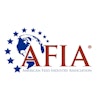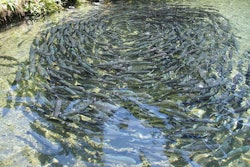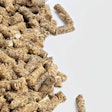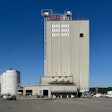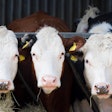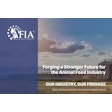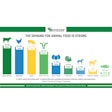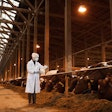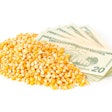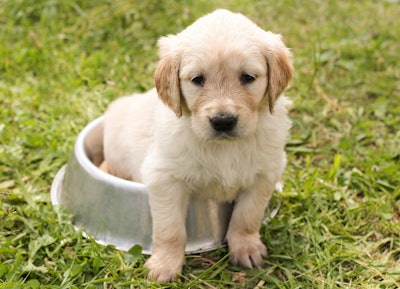
First-of-its-kind research finds that U.S. pet food manufacturers not only provide balanced, safe meals for America’s dogs and cats, but also stimulate the overall agricultural economy through the purchase of ingredients, labor and services from related industries.
The Institute for Feed Education and Research (IFEEDER), North American Renderers Association (NARA) and Pet Food Institute (PFI) released a new, jointly funded report detailing the purchasing power of the $30 billion pet food industry and its economic implications for U.S. agriculture and rural communities. The report also includes an in-depth review of the diverse ingredients most commonly included in dog or cat food. The full report is available online at ifeeder.org.
“This is the first time our three organizations -– IFEEDER, NARA and PFI –- have partnered using our unique expertise to address a knowledge gap on behalf of our members,” says Constance Cullman, IFEEDER president. “We were able to develop a comprehensive study that illustrates just how remarkable our industry is at feeding America’s cats and dogs, stimulating the rural economy and meeting its commitments to sustainability.”
The research finds that U.S. pet food manufacturers give back to the agricultural economy by using 8.65 million tons of animal- and plant-based ingredients for dog and cat food to provide the complete nutrition that pets need, at a value of $6.9 billion.
The data, compiled and presented by the economic research and analysis firm Decision Innovation Solutions (DIS), shows that pet food manufacturers use an estimated 3.8 million tons of animal-based products, such as rendered products or meat and poultry.
Pet food manufacturers also use 4 million tons of farm and farm-product processor ingredients, such as grains, soy products and fruits and vegetables, and approximately 200,000 tons of seafood products.
Many of these ingredients are left over from making food for people, such as parts of the animal that people do not eat, reducing food and environmental waste while still providing the nutrition pets need.
Pet food manufacturers produced approximately 10 million tons of dog and cat food in the one-year period studied between June 2018 and June 2019.
The top five ingredients used in pet food, based on volume, were whole grains, poultry, meat and bone meal, corn gluten meal and soybean meal.
Among U.S. Department of Agriculture defined specialty crops – peas, beet pulp and sweet potatoes topped the list of leading ingredients.
A review of pet food labels found more than 500 diverse ingredients used in pet food, indicating a variety of choices available for shoppers to meet their pets’ needs.
The research also showed that U.S. pet food manufacturers are buying many of their ingredients from America’s heartland, with the top five states being Missouri, Kansas, Pennsylvania, Iowa and Ohio.
Ingredients purchases reached almost $1 billion in Missouri alone.
The purchase of these products from farmers and farmer-product processors stimulates additional upstream economic activity to other related agricultural industries via the multiplier effect. The exchange of pet food ingredients leads to the purchase of an additional $5.3 billion of important materials and services for farmers and farm processors, such as crop inputs, machinery and labor. In addition, those suppliers buy an additional $4.1 billion in services, equipment and labor to meet related needs.
“Two-thirds of U.S. households have a pet at home, meaning that the pet food industry not only plays an important role in the lives of more than 100 million families, but also for our country’s agricultural community,” said Dana Brooks, president and CEO of PFI. “This data is an important step in helping to quantify the economic value this industry brings to our economy and all of U.S. agriculture. As pet lovers, we’ve known the value that pets bring to our lives, but can now further confirm the significance of the entire pet food industry.”
The rendered protein ingredients that pet food manufacturers use to make pet food are highly sustainable. Rendering reduces food waste by transforming otherwise unused portions of an animal to create safe and nutritious pet food ingredients. The rendering process also naturally returns billions of gallons of water into the environment as clean water and has a greenhouse gas reduction equivalent of removing millions of cars off the road, all sustainable practices that are reflected in the finished pet food product.
“With pet parents’ growing interest in the sustainability and carbon footprint of their pets’ food, we feel it is important to highlight that the rendered protein ingredients in their pets’ food is not only nutritious but is also helping to reduce food waste,” said Nancy Foster, president and CEO of NARA. “While about half of an animal isn’t eaten by people, that food provides proteins that our pets crave due to the high nutrient content. Rendering takes that material, which would have otherwise been wasted in landfills or going down the drain, and transforms it into the safe and nutritious pet food that dogs and cats need.”
A full version of the report prepared by DIS, as well as an interactive map detailing economic projections at a state level, are available online at ifeeder.org.
